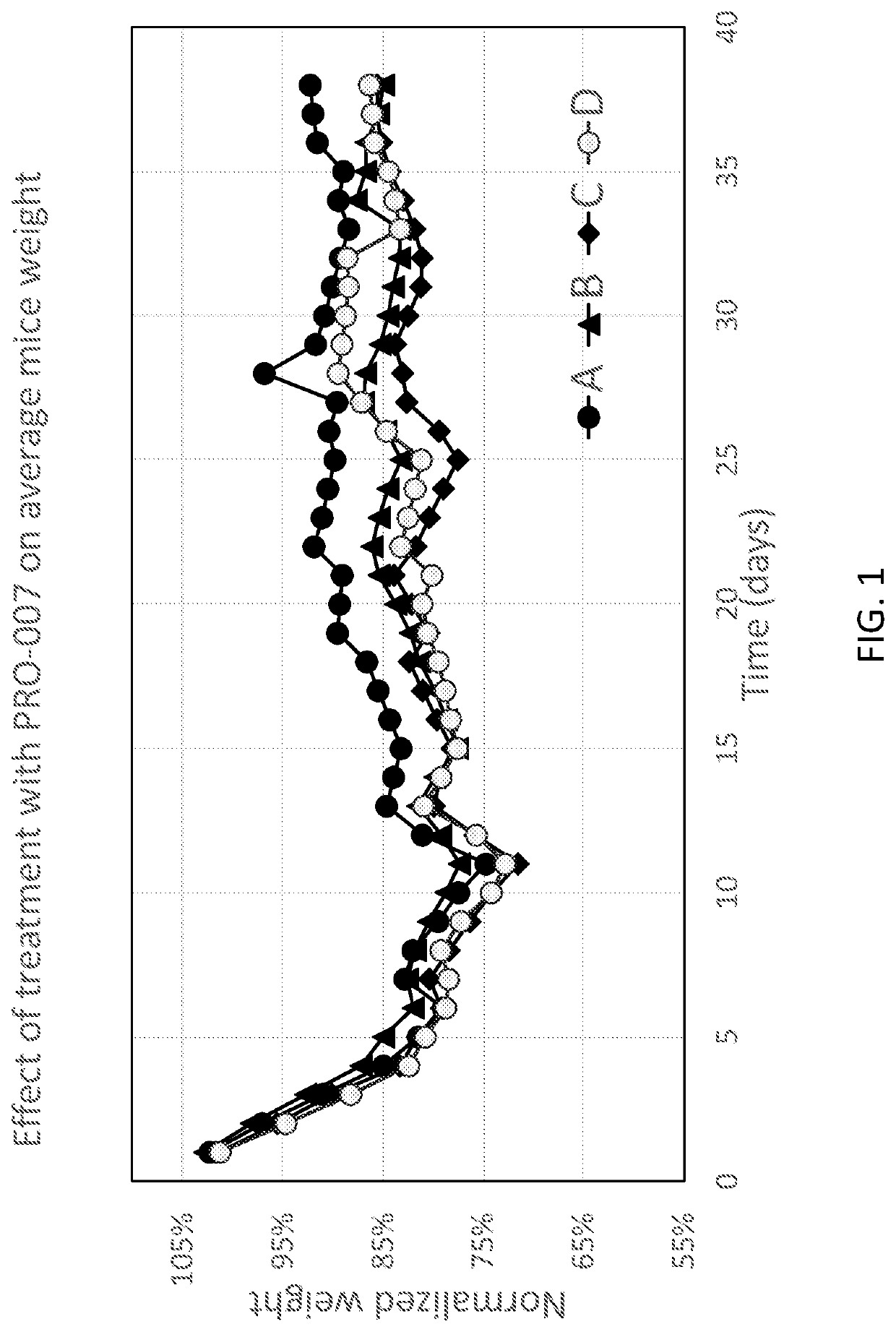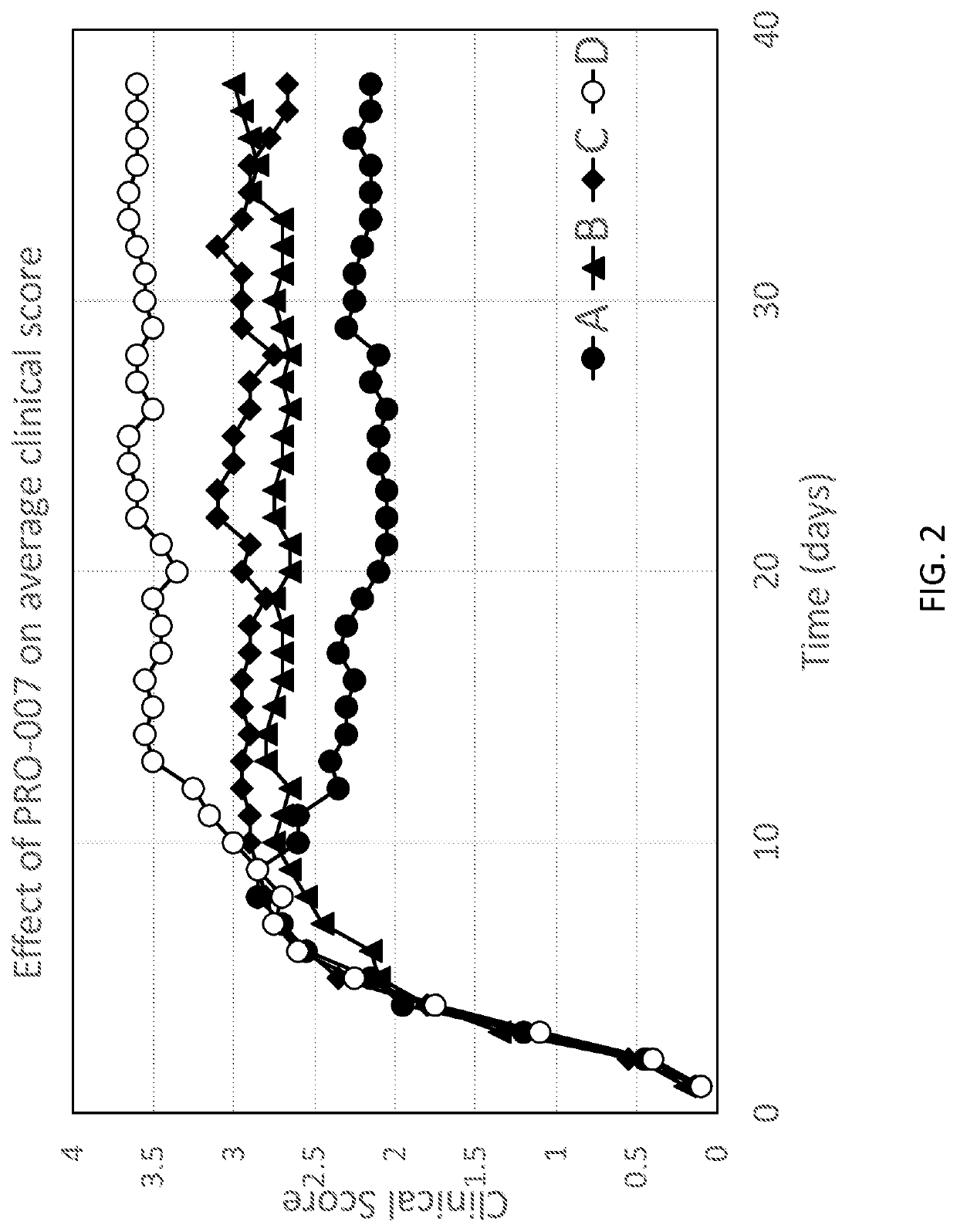Methods and compositions for treating multiple sclerosis
a technology of compositions and multiple sclerosis, applied in the field of compositions and methods of treating multiple sclerosis, can solve the problems of profound axonal energy deficits, irreversible axonal damage, and loss of myelin, so as to prolong the survival of patients, reduce the severity of the disease, and reduce the demyelination
- Summary
- Abstract
- Description
- Claims
- Application Information
AI Technical Summary
Benefits of technology
Problems solved by technology
Method used
Image
Examples
example 1
Effect of Anti-FGFR2 / 3 Antibodies on EAE Manifestations
[0093]Experimental autoimmune encephalomyelitis (EAE) is the most common animal model for multiple sclerosis (MS) sharing many clinical and pathophysiological features. Actively-induced EAE in mice is the easiest inducible model with robust and replicable results. C57BL / 6 mice are the commonly used strain. The mice are immunized with myelin oligodendrocyte glycoprotein (MOG) 35-55 peptide, and within 9-14 days after immunization, the mice develop EAE with paralysis (see, for example, Bittner et al., 2014, J. Vis. Exper. (86) doi: 10.3791 / 51275).
[0094]Four groups (10 female mice / group) were immunized with MOG 35-55 peptide. After the onset of the disease, each group was treated as indicated in Table 1 below.
TABLE 1Group designation.TreatmentGroup IDMaterialDose (mg / kg)frequencyAPRO-0070.0848 hrsBPRO-0070.0824 hrsCPRO-0071.248 hrsDPBSN / A48 hrs
[0095]PRO-007 is a single chain antibody fragment which binds both FGFR2 and FGFR3 with h...
PUM
| Property | Measurement | Unit |
|---|---|---|
| body weight | aaaaa | aaaaa |
| body weight | aaaaa | aaaaa |
| body weight | aaaaa | aaaaa |
Abstract
Description
Claims
Application Information
 Login to View More
Login to View More - R&D
- Intellectual Property
- Life Sciences
- Materials
- Tech Scout
- Unparalleled Data Quality
- Higher Quality Content
- 60% Fewer Hallucinations
Browse by: Latest US Patents, China's latest patents, Technical Efficacy Thesaurus, Application Domain, Technology Topic, Popular Technical Reports.
© 2025 PatSnap. All rights reserved.Legal|Privacy policy|Modern Slavery Act Transparency Statement|Sitemap|About US| Contact US: help@patsnap.com



